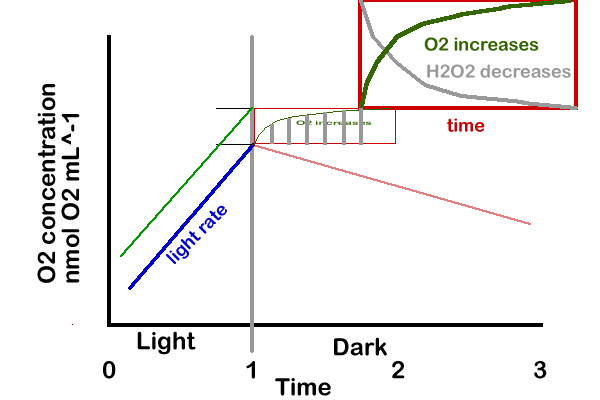The observed response.
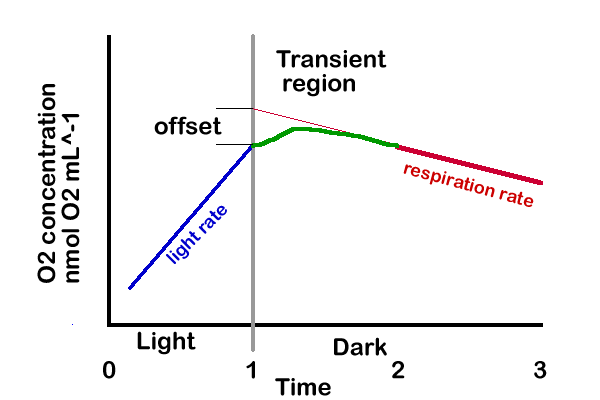
When the light is on, there is an increase in [O2].
At the same time there is production of H2O2 and decomposition to O2 taking place that is in a steady state.
Results in an added level of H2O2 that could turn into O2.
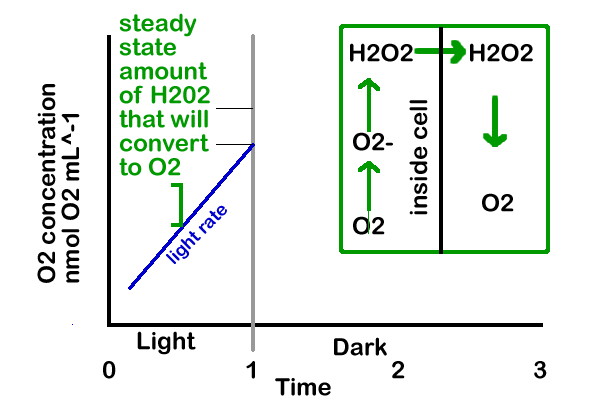
When the light is turned off, the cells have a net uptake rate of O2.
If there were no H2O2 present, the observed line would be linear, starting as soon as the lights were off.
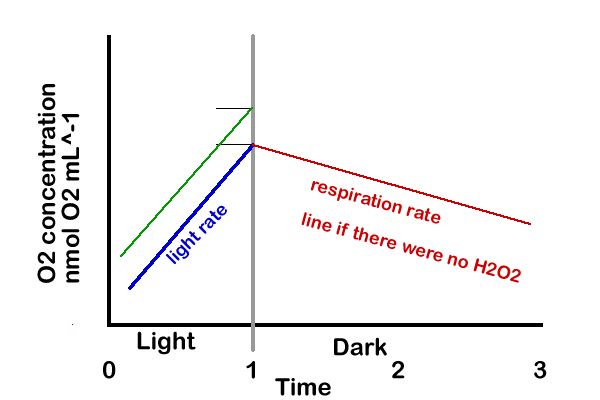
In the dark, no more H2O2 will be produced and there will be a net breakdown on H2O2 and a net addition of O2.
The rate of breakdown will depend on the concentration of H2O2.
With time, over about a minute, the H2O2 will decrease to zero and the O2 added to the media (from H2O2) will reach a constant level.
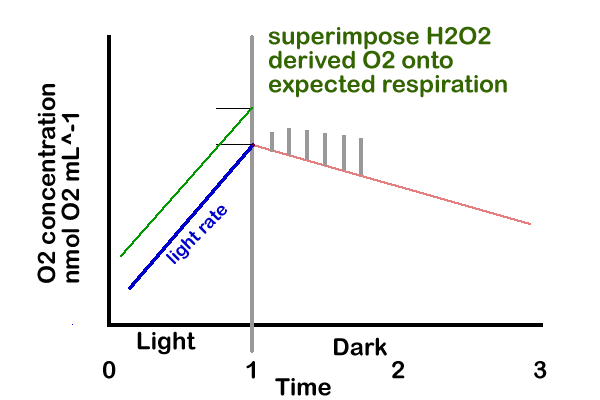
The rate of [O2] decrease becomes linear when all of the H2O2 has been converted to O2.
In order to separate out the contribution of H2O2, we can extrapolate back to the point where the light was turned off. The difference between that extrapolated value and the end of the light period, is the excess [O2] contributed by H2O2.
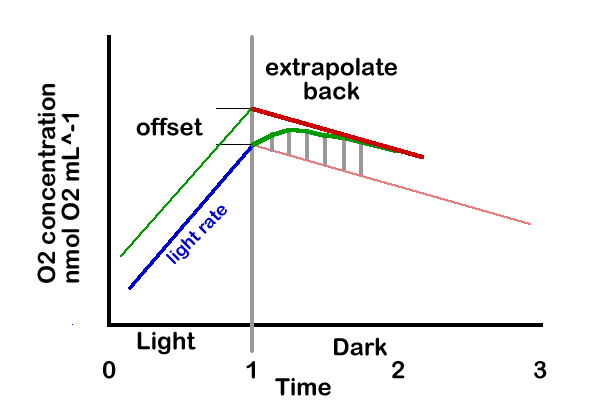
The observed data with:
light rate
transient region
offset = H2O2 derived O2
respiration rate

